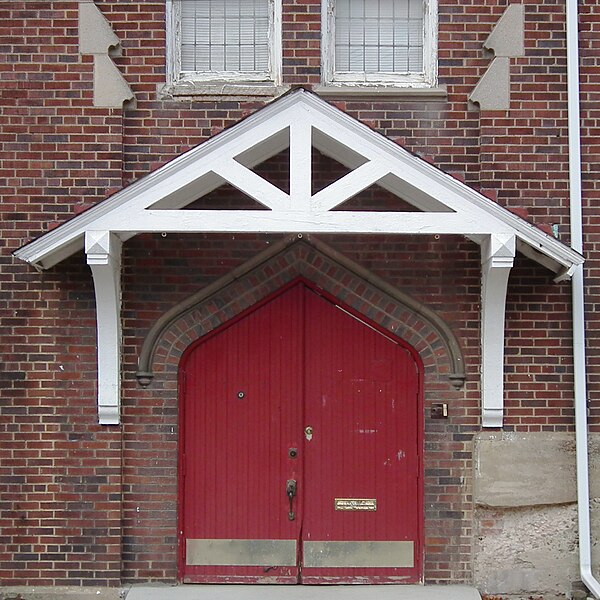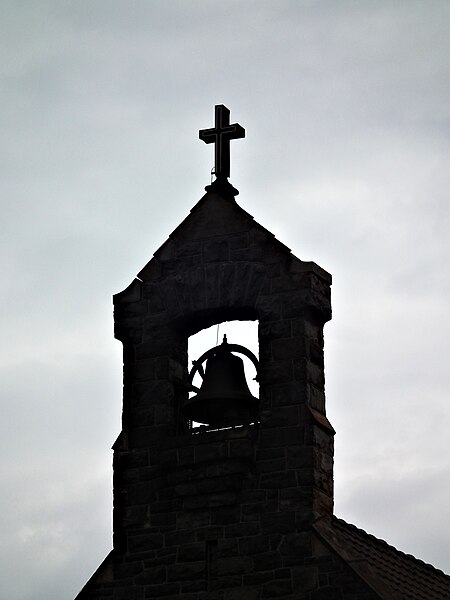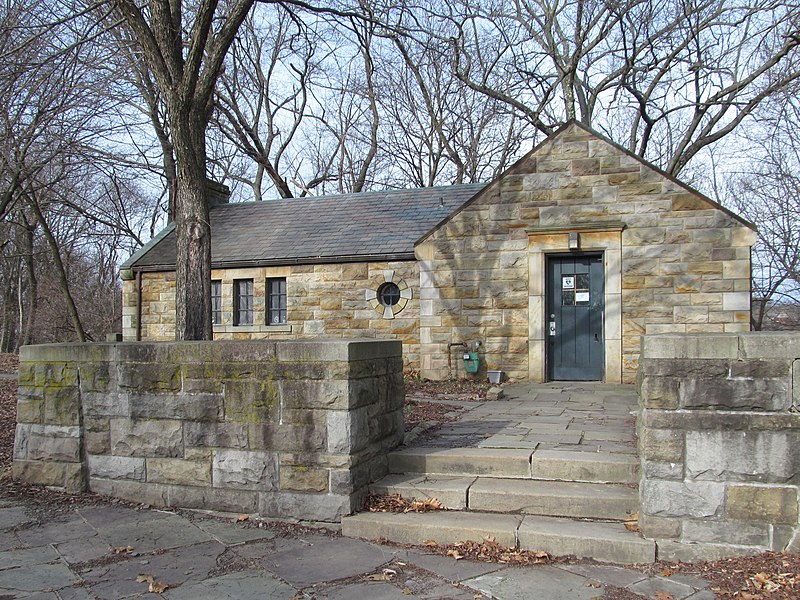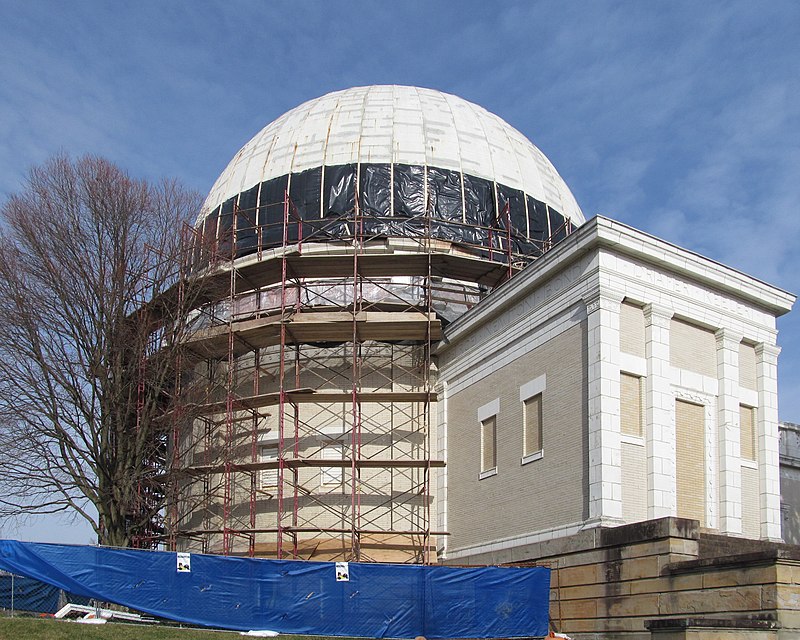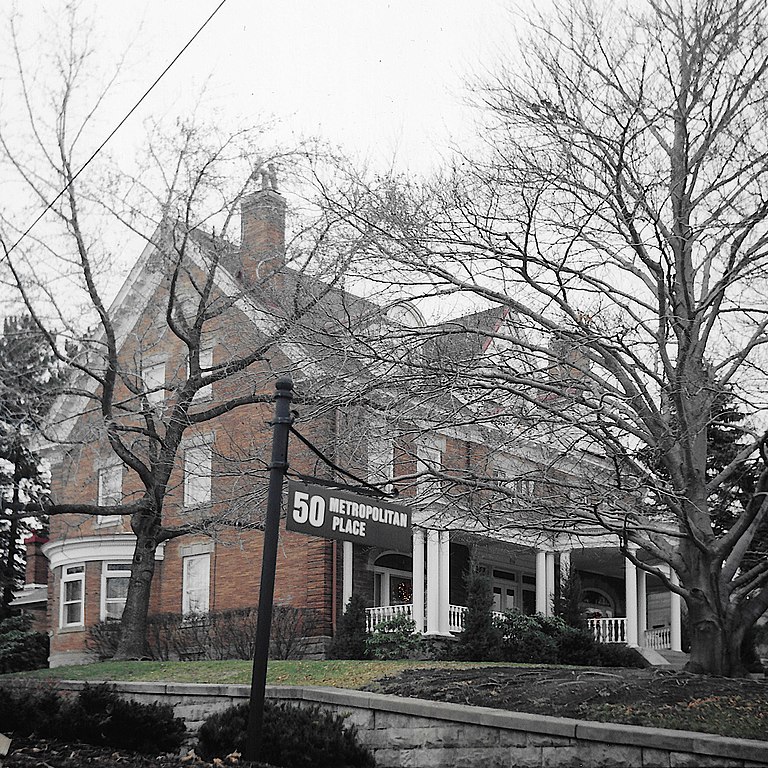
Here is an interesting demonstration of how many Catholic parishes developed in the first half of the twentieth century, and a reminder of how ecclesiastical priorities have changed. Father Pitt does not know the whole history of this building, and perhaps a parishioner could fill us in. But the main outline is this:

The cornerstone tells us that the building was put up in 1925. But it tells us that this was the parish school—and indeed, if we look at the picture at the top of the article again, we can see that the lower level was built first. Many parishes built a school building first, and worshiped in a space in the school until they could afford to build a sanctuary. In Brookline, for example, Resurrection parish built its parish school first and worshiped in the gymnasium until the main church could be constructed. The Lutherans a couple of blocks away did the same thing: St. Mark’s still worships in the building that was intended to be the Sunday-school wing, with a much grander church that never went up next to it. It was taken for granted that the children would be educated, and in Catholic parishes it was taken for granted that there would be a parish school to give them their daily education; if priorities had to be set, the school went up first, because it was easier to adapt a school for worship than to adapt a church sanctuary for schooling.
In this case, the sanctuary was built on top of the original school, which was probably the plan from the beginning. We can therefore add this to our list of churches with the sanctuary upstairs, although, because of the steep Pittsburghish lot, the corner entrance is only seven steps up from the sidewalk.
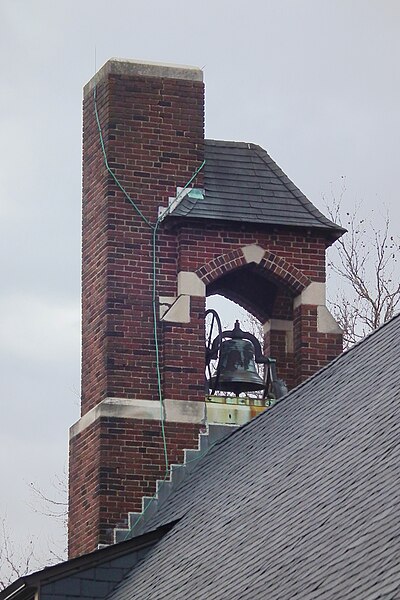
The belfry is one of the most picturesque aspects of the building.



